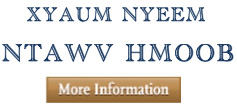History in China
IN THIS SECTION
Commentary: Challenges and Complexity in the Re-Construction of Hmong History
By Kou Yang California State University, Stanislaus
Hmong Studies Journal, Volume 10, 17 pages
ABSTRACT
In the past 30 years various accounts of Hmong history have emerged from Hmong and non-Hmong scholars working in the United States, other Diaspora countries and Asia. This short commentary paper examines and addresses some of the questions that have arisen from the many versions of Hmong history in China being circulated among the Hmong of the United States.
Introduction
As a people of Diaspora and an ethnic minority, the Hmong have previously been an undocumented people. This has gradually changed during the last three decades, as Hmong Americans have undergone the transition from pre-literacy to literacy. The Hmong of other countries have experienced similar patterns, which have led to more publications of books and scholarly articles written by Hmong writers and scholars. Additionally, the change in China from a strict socialist system to a socialist-market economy has enabled many Hmong/Miao scholars to publish books and scholarly articles about their past experiences. Combining these developments with the frequent interaction between the Hmong/Miao in China and their cousins in the western countries has generated many versions of Hmong history. This short commentary paper examines and addresses some of the questions that have arisen from these many versions of Hmong history being circulated among the Hmong of the United States. Moreover, it only selects bits and pieces from what have been circulated. As such, it is from the perspective of historicism. Moreover, it does not intend to cover all questions relevant to Hmong history, but only bits and pieces of them.
Hmong History
There are many versions of early Hmong history being circulating among the Hmong in the United States.2 The most common versions are that the Hmong came from Mesopotamia, Siberia or Mongolia, and that their history in China can be traced back to King Chi You of ancient central China. A good example of these conflicting histories comes from Yang Kaiyi, a Hmong Chinese who visited the Hmong in America several times in the 1990s. He writes that he was surprised to learn that many Hmong Americans believe their history can be traced back to Mongolia. Kaiyi‘s article (1996) strongly objects to conjecture that Hmong came from Mongolia. He argues that the ancestral homeland of the Hmong is in central China, and that their history in China can be traced back to about 3,000 BC.
READ FULL ARTICLE FROM HMONG STUDIES JOURNAL
Challenges and complexity in re-construction of Hmong history by Yang HSJ10







